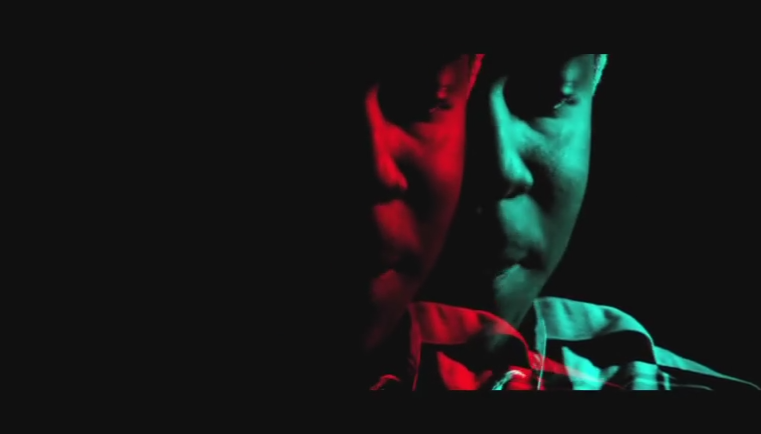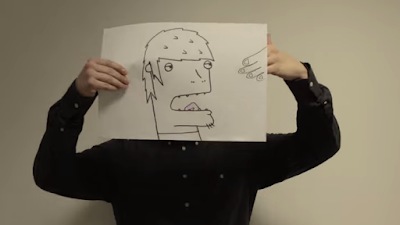Music videos haven't really been around for as long as you think compared to other forms of media text, in fact the first proper music video was released in 1975 by 'Queen' the 70's English Pop/Rock band.
In 1975 when the rock band Queen made their video for their hit
single Bohemian Rhapsody. The video helped promote the song as the music videos
in this form had never been seen before. This gained 'Queen a lot of fame, and it even came out the same year as blockbuster film 'Jaws'
The promotion of Artists and the promotion of directors is
very common in the music video industry. One of the music videos main functions is
to promote an artists image of how they want to be viewed by the audience. In
Sum 41's video for the song 'Fat Lip' the artists are seen playing at some sort of punk meet up in a wasteland area with skateboarders, head shavers and just full on mess. This helps the bands to portray their image of being
rebellious teens, this then makes them appeal to younger aged people like themselves who like to act in that sort of manor.
Although Music Videos will be made to appeal to whoever that artist is trying to get across to, for example Sum 41 aren't trying to appeal to an old generation (60+) therefore the artists really need to think what content they need to include to really grab a hold of their fans.
Although Music Videos will be made to appeal to whoever that artist is trying to get across to, for example Sum 41 aren't trying to appeal to an old generation (60+) therefore the artists really need to think what content they need to include to really grab a hold of their fans.
The music video can also be used to promote the director. In
the video for Savant's 'Kali 47'
The director from YouTube named 'Mike Diva' uses lots of action, effects which promotes him. This came about due to a kick starter campaign which helped him to fund the video, this then lead to a lot more recognition for him in the media world.
More specifically, even for big artists nowadays, it's important to have music videos as part of a strong album campaign to keep them relevant in an increasingly competitive and changing industry.
Music videos have become a lot more popular recently due to the fact that the artists can really show who they are and what the can achieve with media visuals, and it's much more exciting and interesting to watch visual which accompany a song.
So how do these big artist's music videos compete from those smaller, unknown ones? Basically, these big artists such as Katy Perry are already well-known, so what purpose do their videos fulfill? They're pretty much just there to maintain the artist's image. Here's Katy Perry's video for 'Roar':
Countless underground artists choose to self-produce their
music not by choice, but by necessity, as interested record labels are
difficult to come by, even though you can self-produce a music video through a label. Although, some larger, major label artists choose to
self-produce their own music.
Here is an example of a self produced song by 'RadioHead'
Another example of an artists music video is when they release a video which is considered to be artistic, this includes experimental colour shapes and just an overall arty feel instead of having naked women and drinking in the club, and example of an artistic music video is Tame Impala's 'Feels Like We Only Go Backwards':
Some music videos try to promote a message or a statement about something, this is a creative way to get a message across as it appeals to so many different types of people and some people may be more inclined to listen, not to mention it could just be a great song and video, and example of this is Public Enemy's 'Fight The Power'
Like radio, when a music video is shown on TV or viewed on
the internet the artist gets royalties, so every time it is watched a payment
is made. The artist will technically get royalties as it is almost impossible
to track the proper amount of views of the video. Instead an roughly true estimate is made which is based
on the popularity of the artist or song. One problem with that is only some
unrecognized artists get royalties and is due to mainstream popularity.
Reasons for this is that mainstreams artists are usually
already popular so companies would rather invest in those than waste money on
un-recognized artists who may be good but the companies don't want to take a
risk which could cost them money. Although un-recognized artists can get
recognition for their videos and get paid for it, one way is to come up with
new and innovative idea, which are interesting and fun to watch, for example
'Ok Go', their music videos are very interesting and involve contraptions and
routine dance moves which are very specific. if some of these music videos are
uploaded to YouTube they can get paid through the amount of views they get.
Here is an example of Ok Go's music video for 'Here It Goes
Again':
Another thing which typically large artists tend to do is 'synergise' with commercial partners. This just means that
they strike up a deal with one another, that one party will promote the other's
product while the other one does. For example this Tupperware box below is not made by Disney, it is a independent company, but it has bought the rights to use Disney's Frozen print on it.
for example this music video promotes the film 'Frozen' therefore fans of the film will watch this and fans of the music video will watch the film, so its a very solid cycle. Below is Idina Menzel's - 'Let It Go' which is from Frozen (Disney):
Product placement is a way company's can promote their brands via an artists media texts. An example of product placement is in Skepta' music video 'Shutdown' in this music video him and his 'crew' he is with are seen wearing Nike and driving Mercedes.
for example this music video promotes the film 'Frozen' therefore fans of the film will watch this and fans of the music video will watch the film, so its a very solid cycle. Below is Idina Menzel's - 'Let It Go' which is from Frozen (Disney):
Product placement is a way company's can promote their brands via an artists media texts. An example of product placement is in Skepta' music video 'Shutdown' in this music video him and his 'crew' he is with are seen wearing Nike and driving Mercedes.
Below is screenshots from the music video:
There are always different types of ways that you can get your media text out,These types of media
outlets and sources allow people to access media text in different ways. When it comes to
music videos there are different kinds of outlets and platforms they are as follows:
The Internet - Websites such as YouTube and Vimeo allow users and artists to upload media texts for free to be viewed by anyone who has access to these websites, artists can also make money from the number of views they accumulate on certain videos.
Television - Certain Television channels and programs show music videos, although these music videos are only usually from well known artists or upcoming ones. Channels such as Viva and E4 show music videos regularly.
DVD or CD - Some artists (usually bigger, well known ones) may release a DVD or CD of some of their songs and music videos, although usually the DVD show coverage of a live performance or a whole tour, and example of one of these is 'Eminem's - All Access Europe'
VHS - Some older artists who were around when VHS was more popular may have released copies of their music videos or live tours on this platform. An example of this is
| DVD cover of Eminem's - All Access Europe |
| VHS cover of Michael Jackson's - Greatest |



































